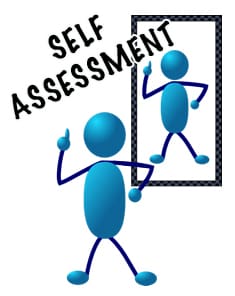
CSU’s Young Males of Color conference in October 2023.
Credit: CSU Dominguez Hills
Last year, Cal State campuses received some sobering details about the growing gaps in graduation rates between students of color and their white counterparts. Instead of decreasing, the graduation equity gaps between Black, Latino and Native or Indigenous students have been increasing.
But some campuses are targeting new dollars and deploying new strategies to specifically target students of color that will help increase graduation, persistence and retention.
CSU’s Young Males of Color Consortium, which is housed at Cal State Dominguez Hills, received $3.2 million from a group of organizations including Ballmer Group, College Futures Foundation, ECMC Foundation and Ichigo Foundation to create new programs that support men of color on Cal State campuses. Sixteen CSU campuses and their neighboring community colleges will deploy those programs with the goal of improving rates of transfer, retention and graduation for up to 800 students. The partnered universities and colleges will start working with up to 40 young men each to pilot the new strategies.
The consortium, which started in 2017, has the goal of working across campuses to share information and data, and find solutions to help CSU’s Black and brown men.
The main challenge the consortium realized it needed to tackle was “institutional complacency” because many campuses failed to have the right data on students of color, or limited their investment in improving their academic performance, said William Franklin, vice president of student affairs for the Dominguez Hills campus.
Last year, during CSU’s Graduation Initiative 2025 event, new data revealed the graduation gap between Black, Latino and Native American students and their peers increased by 1 point to a 13% difference. The 2023 six-year graduation rate for Black students, for example, is at 47% but 62% for all students.
The rates on the Dominguez Hills campus, for example, are lower for Black and Latino men. The six-year rate for Black men is 36.4% and 38.9% for Latino men on the campus. Data for Native American and Native Hawaiian or Pacific Islander students was not available.
“We need to hire full-time folks and we need to really give them training,” Franklin said. “We need to begin to connect with our institutional research office and understand our data better. It doesn’t necessarily mean we need more money, but we do need to spend the money that we have differently in order to ensure that those male of color programs get the kind of support they need.”
With the new funding, the campuses will work together to assess and evaluate instructors and staff, while also providing professional development opportunities. The campuses would also work with their community college partners to better assist them in transferring more Black and brown students to the universities.
Members of the consortium have already visited other universities outside of California that have seen success in improving graduation rates for Black and Latino students such as Georgia State University, Urban Prep Academies in Chicago and the University of Texas at Austin, Franklin said.
And while they’re unsure which strategies will work best for Cal State students, figuring it out is part of the funding.
“Our funders have also given us an opportunity to take the funding they’ve given us to provide it as seed money for campuses to put some innovative programs and strategies in place,” Franklin said. “Fail fast or succeed fast, and learn what they need to do in order to scale those things that work.”
Black Honors College
Sacramento State is also trying something new to help not only the Black students on its campuses but across the system.
This fall, the university will debut the country’s first Black Honors College. Sac State has one of the CSU’s largest populations of Black students, and low graduation rates. The six-year rate for all Black students is about 45%.
“We’re the No. 1 institution serving Black students and we’re in the bottom third when it comes to graduation rates,” Sac State President Luke Wood said. “Our 75-year history has shown that what we’re doing is not working. I don’t just speak about that from the perspective of being president here, but I was a student here at Sac State. I got my bachelor’s degree here. I got my master’s degree here, and many of the people who are my contemporaries never graduated because the institution is not designed to support Black students.”
Sac State officials also looked outside of California for solutions, particularly at historically Black colleges and universities where graduation rates are much higher.
“We’re creating an institution within the institution so students have a standalone experience with their own curriculum, their own faculty, their staff, their space,” Wood said.
The college would be open to students of all majors, but the first two years of curriculum would have an African-American focus. For example, political science or statistics classes would have a unique focus on Black politics, issues and community.
Wood said the idea is built on research that shows creating a “family-like environment” and offering a curriculum relevant to students’ lives and experiences improves their academic success.
The new college will have 6,000-square feet of dedicated space with its own faculty, dean, counselors, academic advisers, support staff and outreach. But the ultimate goal is to see more Black Honors Colleges appear statewide and nationally, despite the conservative attacks on diversity, equity and inclusion happening in other states.
But Wood anticipates more Black Honors Colleges appearing on community college campuses, some of which have already contacted Sac State for guidance or information, with the potential to establish a transfer relationship with the university.
“We’re going to grow this Honors College pretty extensively,” he said. “Our goal right now is 500 or 600, but when we can get more resources, our goal is to get to a thousand students.”
NOTE: EdSource receives funding from several foundations, including the College Futures Foundation and ECMC Foundation. EdSource maintains sole editorial control over the content of its coverage.






